Bad Dive Buddy? How To Create A Safer Buddy System Dive Team!
Scuba diving is a great way to make new friends, but sometimes you end up paired with a dive buddy that you don’t know, and this can create problems. Different levels of diving proficiency and attitudes toward dive safety can make for an unpredictable and even dangerous situation.
Experienced divers often avoid diving with an unknown dive buddy, but sometimes it’s the only option. The only alternative is solo diving, but that’s not recommended without advanced training and significant diving experience.
This article provides some strategies to help divers ensure safe and reliable buddy system diving, including ways to influence the behavior of an unknown dive buddy without causing confrontation or damaging egos.
What is an “insta-buddy” in scuba diving?
“Insta-buddy” is a diving term commonly used to describe a diver of unknown competence and safety mindset that you are spontaneously paired up with on a dive boat.
Unfortunately, some of those divers may be a safety liability. They may cause you concern by:
- Swimming away
- Descending too deep
- Entering overhead environments
- Lacking situational awareness
- Ignoring your signals
- Abandoning the dive plan
- Not retaining an adequate gas reserve
- Refusing to end the dive
- Getting task fixated, especially with cameras
All of these constitute being a neglectful dive buddy that jeopardizes both your and their own safety. I am sure that many scuba divers can relate to experiencing divers like this.
What problems does an unreliable dive buddy cause?
An unreliable or unpredictable dive buddy can cause two types of problems; physical risk and psychological distress.
Increasing risks
A bad dive buddy may act imprudently in ways that expose you to danger or reduce your safety. Firstly, they may exhibit poor judgment and do things that are dangerous. Examples of that are; descending too deep, ignoring your signal to end the dive, ascending too fast, or entering overhead environments. The common factor in these risks to your safety is that they only exist if you choose to follow along with your buddy.
Secondly, a bad dive buddy may decrease your safety by being negligent in effectively supporting you. Should you get into difficulties or experience an emergency they will not come to your aid. When this happens, you essentially become a solo diver against your will.
Causing stress
Observing another diver acting dangerously is likely to cause you anxiety. Firstly, their risky behavior creates a stressful situation where you are forced to make judgments to preserve your own safety. This might include the hard decision to separate from your buddy if it means not exposing yourself to unreasonable risks.
Secondly, observing another diver acting imprudently increases stress because it will expose you to risk if they get themselves into difficulty and need to be rescued.
Lastly, being aware that your buddy is neglectful of supporting you is a significant cause of stress. That is especially true for inexperienced divers who may already be close to the limits of their comfort zone.
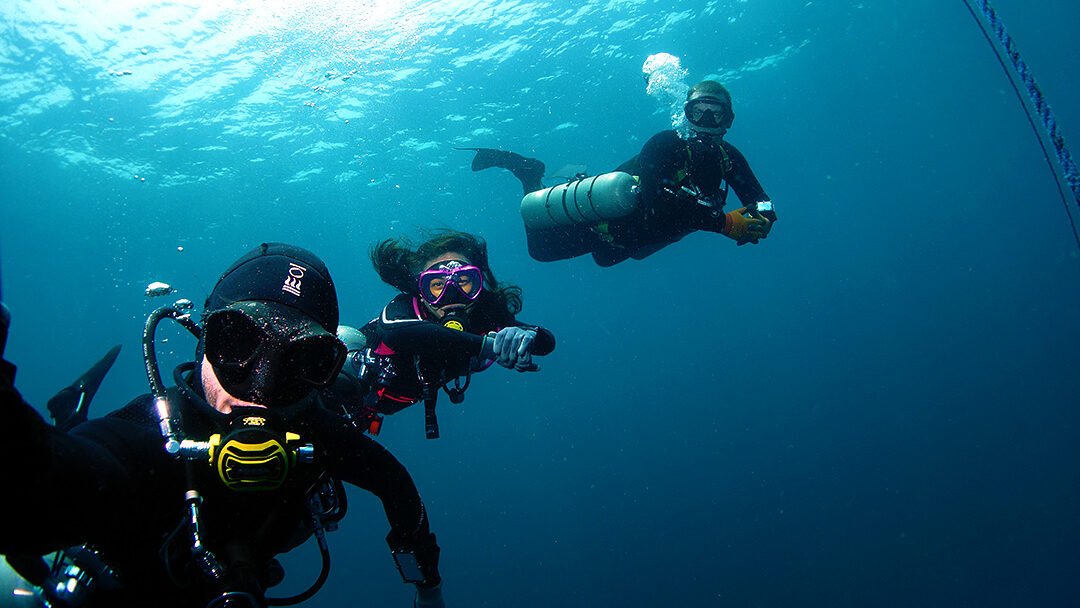
The right mindset for successful buddy diving
The first step towards effective buddy system diving is to adopt an empathetic mindset towards other divers. It is surprisingly easy to misconstrue innocent mistakes as selfish or uncaring behaviors. Try to put yourself in the other diver’s position and consider what factors may cause them to be an unreliable dive buddy.
Common reasons for unsafe dive buddy behaviors include:
- Receiving inadequate training
- Seeing unsafe behaviors role-modeled
- Being blissfully unaware of the risks
- Trying to project a confident image
- Mistaking bravado for competency
- Being over-excited to be diving
- Diving beyond one’s comfort zone
- Attempting to compensate for low proficiency
- Inadvertent complacency
I think all of those factors are understandable. If honest, most divers can relate to them at some point along their diving path. By being empathetic to the root causes of your buddies’ behavior, you can move past simply being annoyed about it. What matters is that all of those factors can be positively influenced if you approach them in the right way.
Become self-reliant as a scuba diver
The next step to stress-free diving is to minimize your reliance on a dive buddy. Accept that you are ultimately responsible for your own safety. The scuba diving buddy system is only a last resort when you cannot handle problems by yourself.
You can improve your self-reliance as a diver in three ways. Firstly, you can invest in high-quality training that improves your overall diving proficiency. Secondly, you can apply safe diving principles without compromise. Lastly, you can equip yourself to handle foreseeable emergencies without assistance; for example, by using a pony cylinder as a redundant gas source.
Embracing sole responsibility for your own safety empowers you to make more confident risk exposure judgments. If you establish that mindset, it becomes easier to set and maintain safety-related boundaries when diving.
The additional benefit of becoming a self-reliant diver is that you can have a discrete influence on the people you dive with. Your own safe diving behavior can be contagious to others. Normally, when other divers recognize your boundaries, they are likely to start questioning their own.
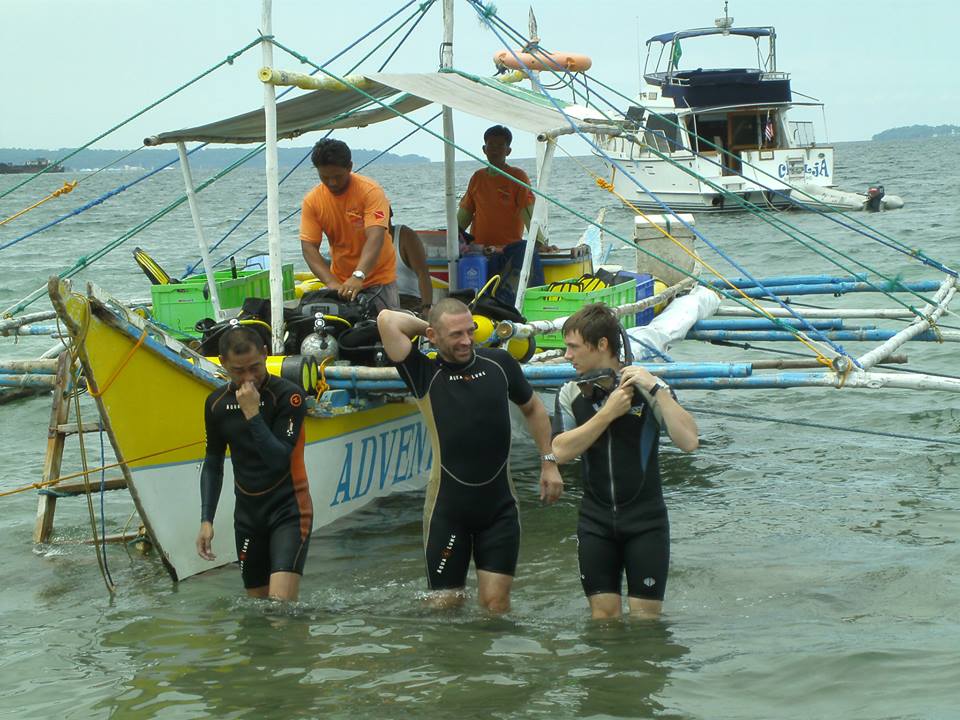
Tactics for harmonious buddy system diving
There are a number of practical actions that you can use to improve the performance of your buddy team. Applied proactively, these actions help frame your expectations for a dive and guide your buddy toward meeting them.
Communicate effectively
Effective communication from the outset is critical. To make that happen, the first step is to establish rapport with your new buddy so that they are receptive to what you say. Use that as an opportunity to evaluate your buddies’ mindset and attitude towards safety. Gauge their diving experience and proficiency as part of getting to know them.
Openly share your own experience and proficiency level with them in return. Use stories about your past dives to establish boundaries and expectations diplomatically. Describe how previous dive buddies may have acted irresponsibly to cause you concern or fear. Most divers will be able to relate to that. Use humor to discretely request they don’t do the same.
If your buddy openly admits that their proficiency or confidence is low, then they have opened the door for you to help them. Suggest that you can work together to keep the dive safe and enjoyable.
Establishing good communication before a dive helps promote good communication during the dive.
If at an early stage, you feel that your dive buddy is unreceptive, dismissive, or disinterested, discretely ask the supervising dive pro to re-assign you to someone else. Don’t let yourself be pressured into diving with someone whose attitude may put you in danger. You cannot form a healthy buddy team with a diver who has no interest in diving as your teammate.
Apply your dive training as a dive buddy
If you want to shape a safer and more responsible dive buddy you have to set them a textbook example. Applying safe diving practices consistently and implementing what you were taught as a scuba diver.
Very few scuba divers diligently apply their training. It is normal for complacency to creep in. Divers become reliant on divemasters providing dive briefings and stop mutually planning dives with their buddies. Pre-dive buddy checks become ever more superficial until eventually, they are non-existent.
The dive buddy system starts the moment you are paired with another scuba diver, not just when you are underwater. The pre-dive procedures you were taught as an Open Water diver don’t just address risks. They are an important step in transforming individual divers into a harmonious buddy team.
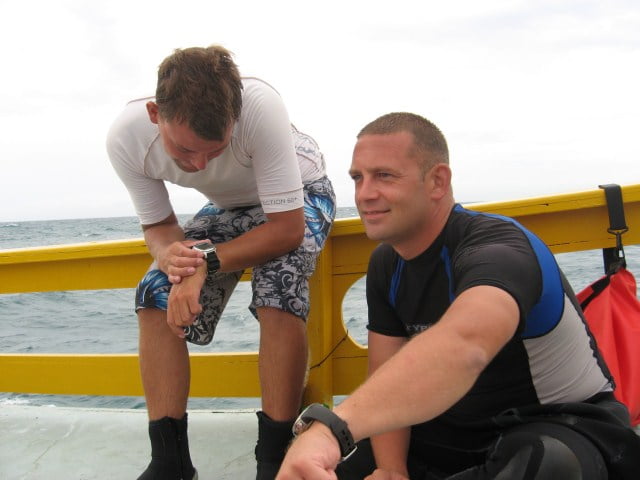
The importance of buddy team dive planning
It is common for a divemaster to give a dive briefing when you are on a guided diving trip. Whilst essential, that can tempt scuba divers into believing that they don’t need to mutually plan their dive as a buddy team.
Planning the dive with your dive buddy is a great opportunity to set your boundaries and expectations. Comprehensive dive planning reduces the likelihood of your dive buddy unpleasantly surprising you during the dive.
The simple step of suggesting that you plan the dive with your buddy can be another indicator of their mindset. Consider it a red flag if they show reluctance.
Be aware that other scuba divers may have received different training than you. They may have been taught different signals, dive procedures, and contingency plans. Your dive buddy may have forgotten some things or may have picked up bad habits from other scuba divers. Pre-dive planning gives you the ability to identify and mutually resolve those differences.
What to cover in buddy team dive planning
Engage with your dive buddy to agree on important aspects of the dive:
- Maximum depth
- Minimum no-stop limit
- Minimum gas supply
- Ascent speed
- Safety stop time
- Maximum distance from each other
- What diving signals to be used
- How actively and frequently you will communicate
- Whether you will go into overhead environments
Clearly spelling those out eliminates the chance of misunderstandings occurring on the dive. Ensure that these are firm dive buddy team commitments.
Don’t neglect contingency planning. Problems that arise during dives are far easier to resolve if both divers have the contingency plan fresh in their minds. Pay special attention to your plan for becoming separated. If your dive buddy knows that you will only wait for 1 minute before surfacing they will be far more vigilant to avoid losing you.
There are two very useful ideas to incorporate into your dive plan:
- Any diver can abort the dive for any reason. Agree that signaling to end the dive will be respected and immediately acted upon.
- State your intentions if your dive buddy abandons the agreed dive plan. Make it clear that you won’t follow along if your dive buddy reneges on the dive commitments they have made. Impose consequences for irresponsible or negligent behavior. That might mean explaining that if they abandon you to go deeper, you will abort the dive and return to the boat alone.
Incorrect assumptions are the root cause of most unreliable dive buddy behaviors. If you have comprehensively planned the dive together, no assumptions will be necessary.
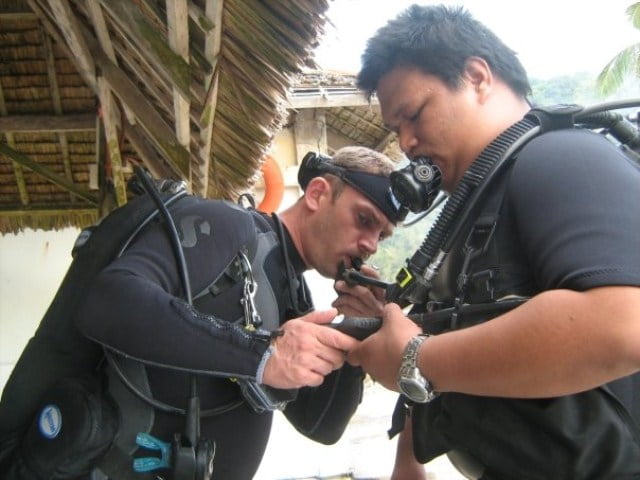
Set a precedent with pre-dive buddy checks
When scuba divers start to gain experience and become more comfortable complacency tends to set in. As a result, one of the first victims of neglect is the pre-dive buddy check. Just like with dive planning, buddy checks are a great opportunity to develop buddy system teamwork. Making a point of diligently performing pre-dive checks further communicates your expectations for responsible diving conduct.
Scuba divers tend to be preoccupied shortly before entering the water. As a result, you feel pressured into skipping buddy checks. Address that tendency by finding reasons to ask for the check to be carried out. For instance, you could say that you’re unfamiliar with your dive buddy’s gear, or a little worried about your own.
If your dive buddy is an underwater photographer
Underwater photographers have a notorious reputation for being negligent dive buddies. Having their attention focused on a camera screen means that their situational awareness will be compromised.
My philosophy towards diving with underwater photographers is:
If you can’t work with them, work for them.
Expecting a zealous underwater photographer to tear themselves away from their camera and give you more dive buddy attention is probably a forlorn hope. Consequently, if you have to dive with an underwater photographer look for solutions that will still allow you to function as a safe buddy team.
From personal experience, my approach is to discuss effective dive buddy procedures during pre-dive planning. I will volunteer to act as their assistant and target spotter. Whilst they are busy capturing one subject, I will scout around in the close vicinity for their next great photo subject. It’s actually quite a lot of fun.
I will anticipate that their situational awareness is impaired and take responsibility for monitoring the buddy team. I suggest a procedure where the photographer takes a moment between each photo subject to exchange details on gas pressure and remaining no-stop time. In return, they don’t need to feel under pressure to be more active as a dive buddy.
Be a good dive buddy to create a good dive buddy
Having already done your best to create a great dive buddy dynamic during pre-dive planning and buddy checks, it is now time to role-model the conduct you expect in the water.
Continue good communication throughout the dive. It’s easy to retreat into your shell when blissed out on a scuba dive, but make a determined effort to signal your dive buddy regularly. Try to be chatty, even if limited to hand signals. Underwater communication is a skill that improves with practice. For that reason, practice it as much as you can on each dive. Demonstrate that you are attentive and observant of your dive buddy; it will motivate them to reciprocate.
As you apply this, there are three critical parts of a scuba dive where dive buddy skills can be applied to great effect; the water entry, the descent, and the ascent.
Being a great dive buddy during water entry
Scuba divers tend to be least observant and supportive of their dive buddy when entering the water. However, water entry is a key point in the dive where many accidents happen. For that reason, try to be especially vigilant and supportive at the very start of the dive.
Aim to be an excellent role model by always entering the water fully equipped and prepared for the dive. Wear your fins and mask and have your regulator in your mouth. Pre-inflate your BCD. Make sure you are already prepared for your own water entry whenever your dive buddy will enter the water first. If they have a problem, you can immediately join them in the water and provide the necessary assistance.
On the occasion when you are the first diver to enter the water, stay in the immediate area, and maximize your situational awareness. Observe your buddy entering the water and whilst they get themselves sorted out on the surface. This ensures that you can quickly provide assistance if necessary. If you make a point of doing this earnestly on every dive, you will quickly become adept at spotting problems before things go bad.
Being a great dive buddy during the dive descent
Most diver separations occur during the initial descent on the dive. During the descent, there is a high possibility a diver can suffer delays in equalizing their ears. If their buddy has decided to plummet to the bottom and isn’t paying attention, there will be separation. Scuba divers are also most likely to discover incorrect weighting or faulty equipment on the diving descent. For those reasons, stay close to your buddy, observe them, and be ready to assist if necessary.
Several diving agencies, such as RAID, train scuba divers to complete formal descent checks. Those checks involve pausing the descent at 5m depth, getting neutrally buoyant, and checking each other for bubbles leaking from equipment. The process also helps keep the buddy team together and promotes mutual support from the outset of the dive. You should consider adopting a similar procedure and including it in your dive planning with new buddies.
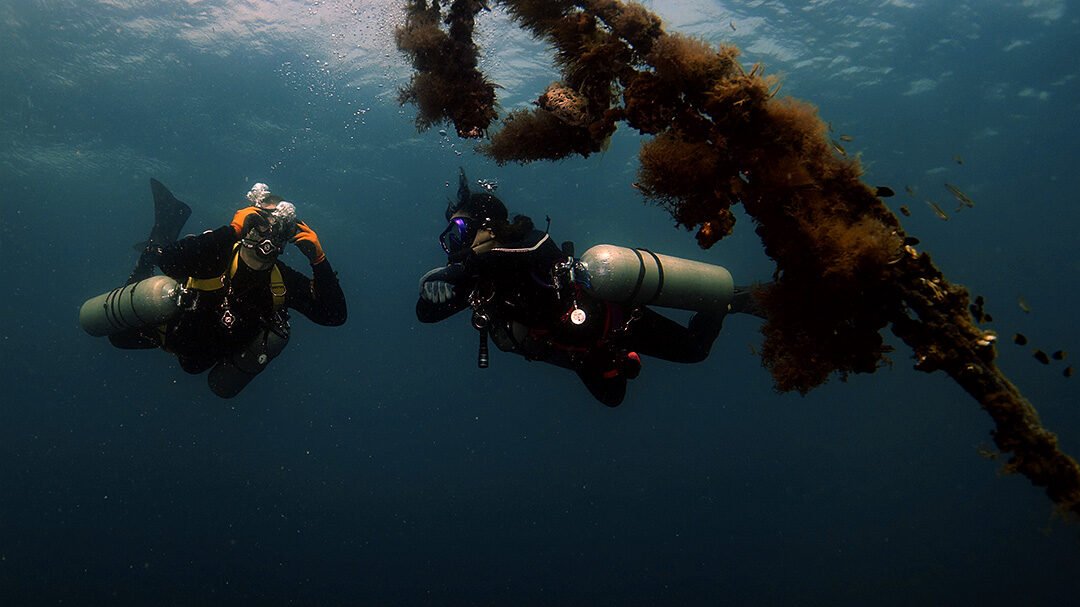
Being a great dive buddy during the dive ascent
Many scuba divers tend to ‘switch off’ mentally at the end of the dive, but this is a time for the greatest awareness and focus. At the end of the dive, nitrogen saturation is at its highest and, hence, there is the biggest risk of DCS from a rapid ascent. Ascents are also the point when scuba divers are most at risk of running low or out of air. Moreover, the air in our BCDs and exposure suits expands at a progressively faster rate as we get shallower. Overall, divers on ascent have the highest chance of suffering buoyancy control problems and the most severe consequences if they do lose control of their buoyancy.
To address these increased risks, condition yourself to believe that the dive does not end until both divers are safely back on the boat and de-kitted. Continue being a great dive buddy until the moment you are drying off under the sun.
Apply this approach when you have a bad dive buddy
In conclusion, scuba diving can be an incredible way to make new friends, but it can also present challenges when you are paired with an unfamiliar dive buddy. These divers may have different levels of experience or attitudes toward safety, which can create physical and psychological risks for both individuals.
Experienced divers often avoid diving with unknown partners, but when it is the only option, there are several strategies that can be employed to ensure a stress-free and safe dive. It all begins with empathy and understanding toward your new buddy. Misconstruing innocent mistakes as selfish or uncaring behavior can create an unnecessary rift between you and your partner.
To minimize reliance on a dive buddy, it is important to take responsibility for your own safety and establish open communication from the outset. Establishing rapport with your partner and assessing their level of experience and proficiency is key to shaping a safer and more responsible dive buddy.
Comprehensive dive planning and pre-dive checks can reduce the likelihood of unpleasant surprises during the dive. Buddy checks are also a great opportunity to develop teamwork and establish expectations for responsible diving conduct.
During the dive, it is important to maintain good communication and be especially vigilant and supportive at the start. Consider adopting a formal descent check to keep the buddy team together and promote mutual support from the outset of the dive.
Finally, remember that the dive does not end until both divers are safely back on the boat and de-kitted. Continue being a great dive buddy until the moment you are drying off under the sun. By following these strategies, you can ensure safe and reliable buddy system diving, even with unfamiliar partners, without causing confrontation or damaging egos.
About The Author

Andy Davis is a RAID, PADI TecRec, ANDI, BSAC, and SSI-qualified independent technical diving instructor who specializes in teaching sidemount, trimix, and advanced wreck diving courses.
Currently residing in Subic Bay, Philippines; he has amassed more than 10,000 open-circuit and CCR dives over three decades of challenging diving across the globe.
Andy has published numerous diving magazine articles and designed advanced certification courses for several dive training agencies, He regularly tests and reviews new dive gear for scuba equipment manufacturers. Andy is currently writing a series of advanced diving books and creating a range of tech diving clothing and accessories.
Prior to becoming a professional technical diving educator in 2006, Andy was a commissioned officer in the Royal Air Force and has served in Iraq, Afghanistan, Belize, and Cyprus.
In 2023, Andy was named in the “Who’s Who of Sidemount” list by GUE InDepth Magazine.
Purchase my exclusive diving ebooks!
Originally posted 2018-03-07 23:56:49.







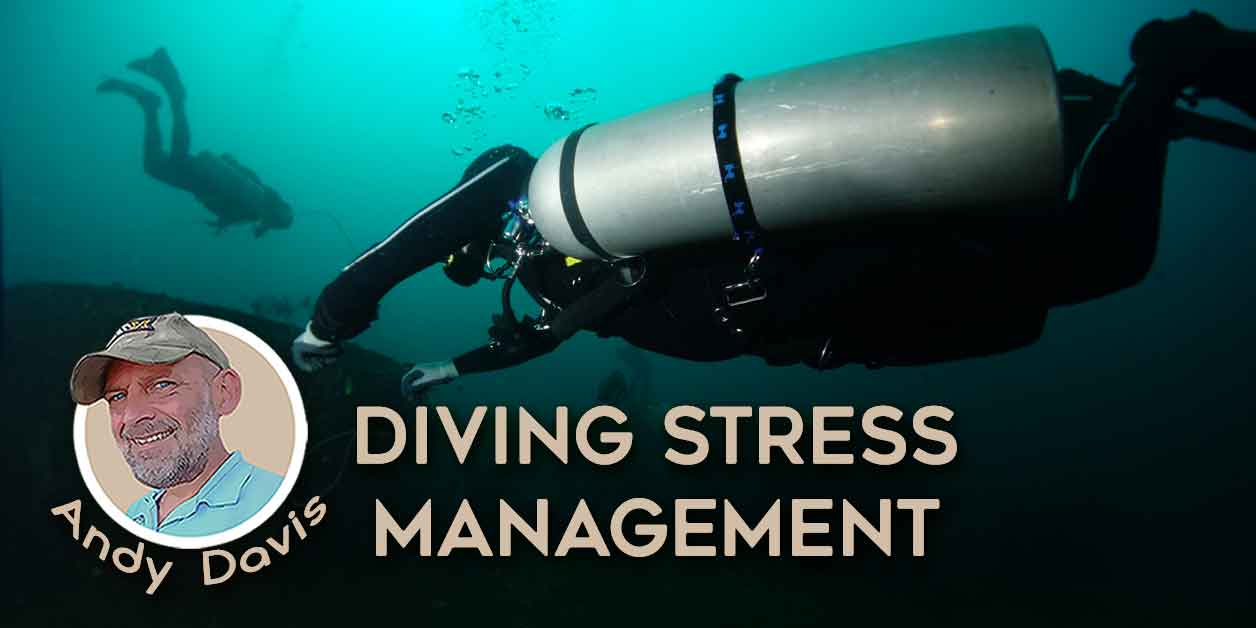

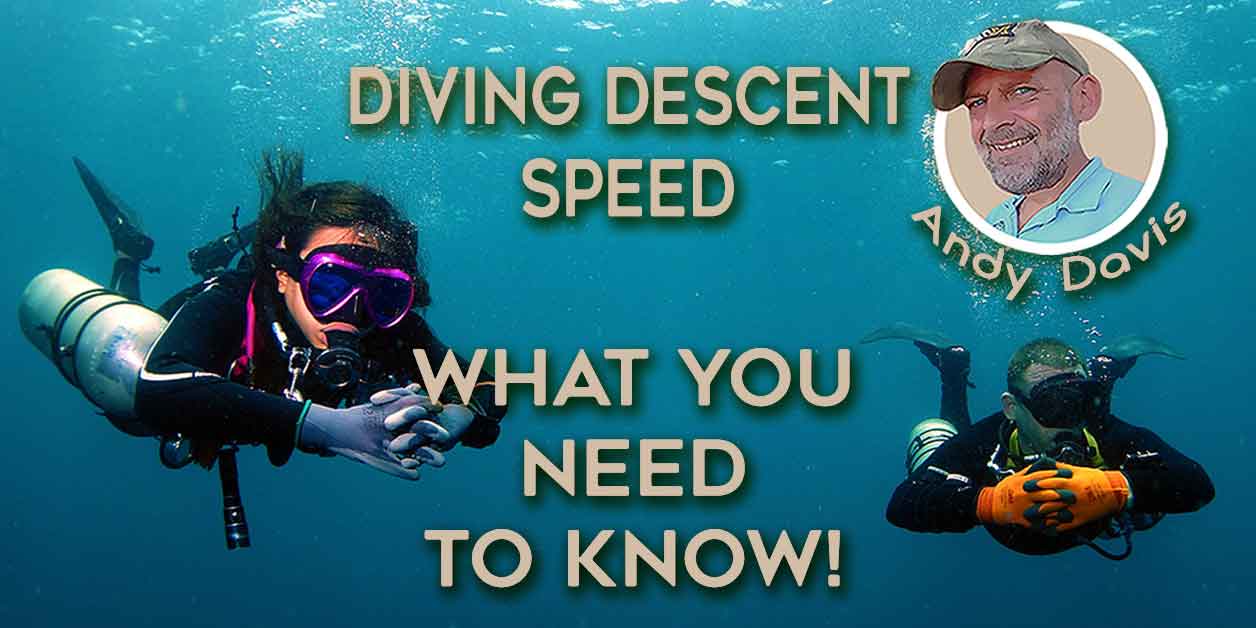
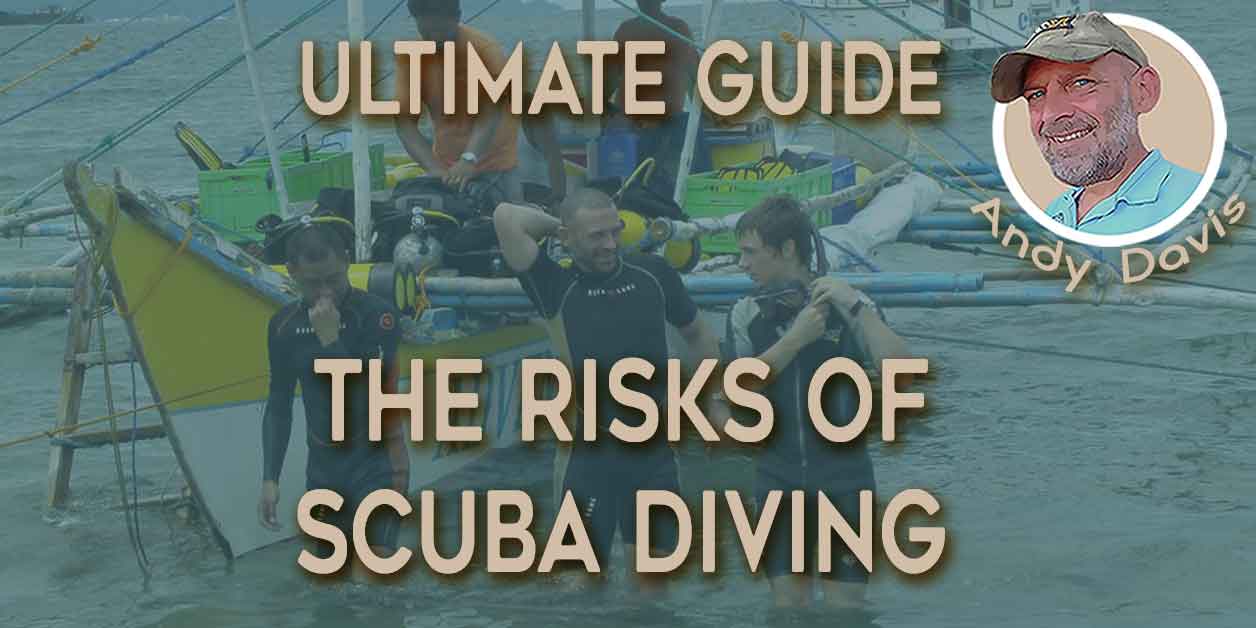
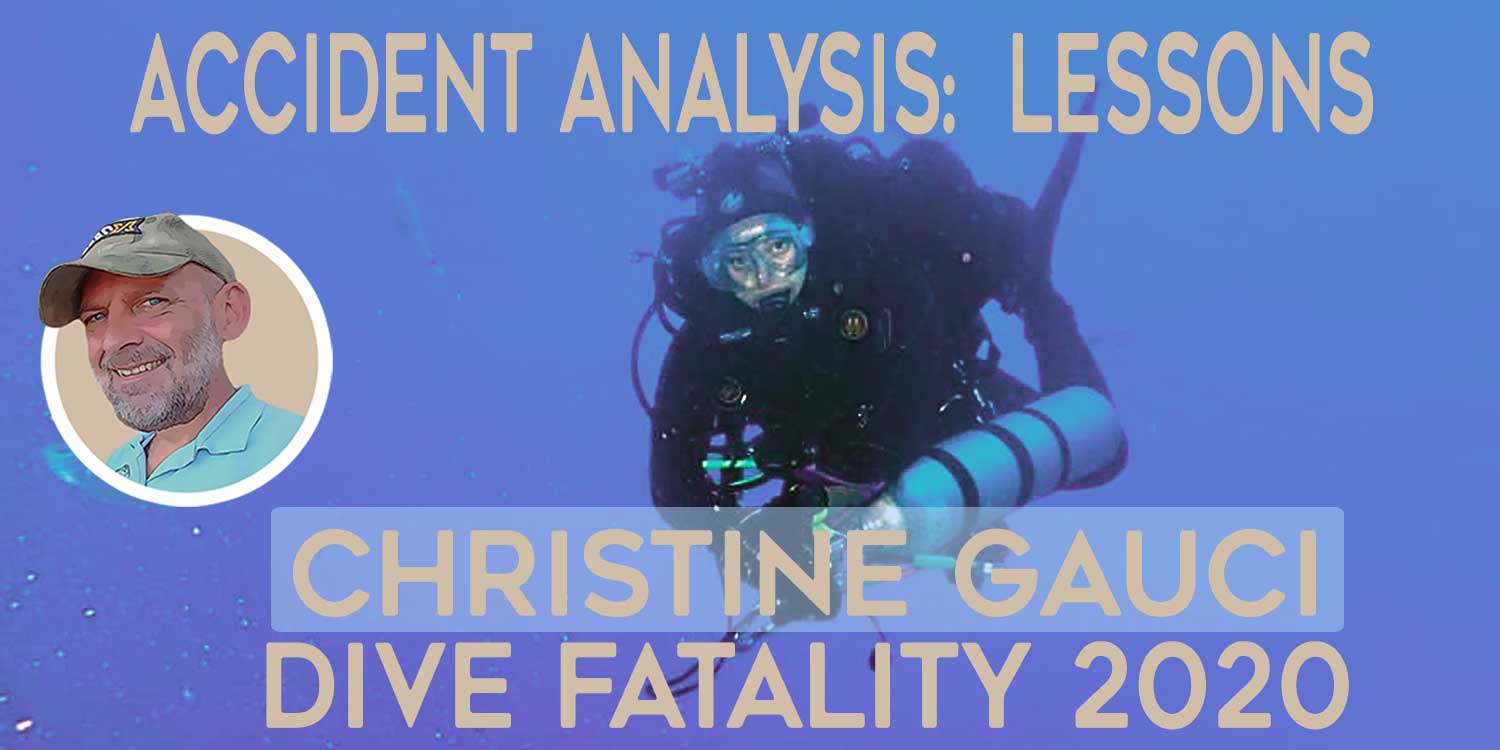

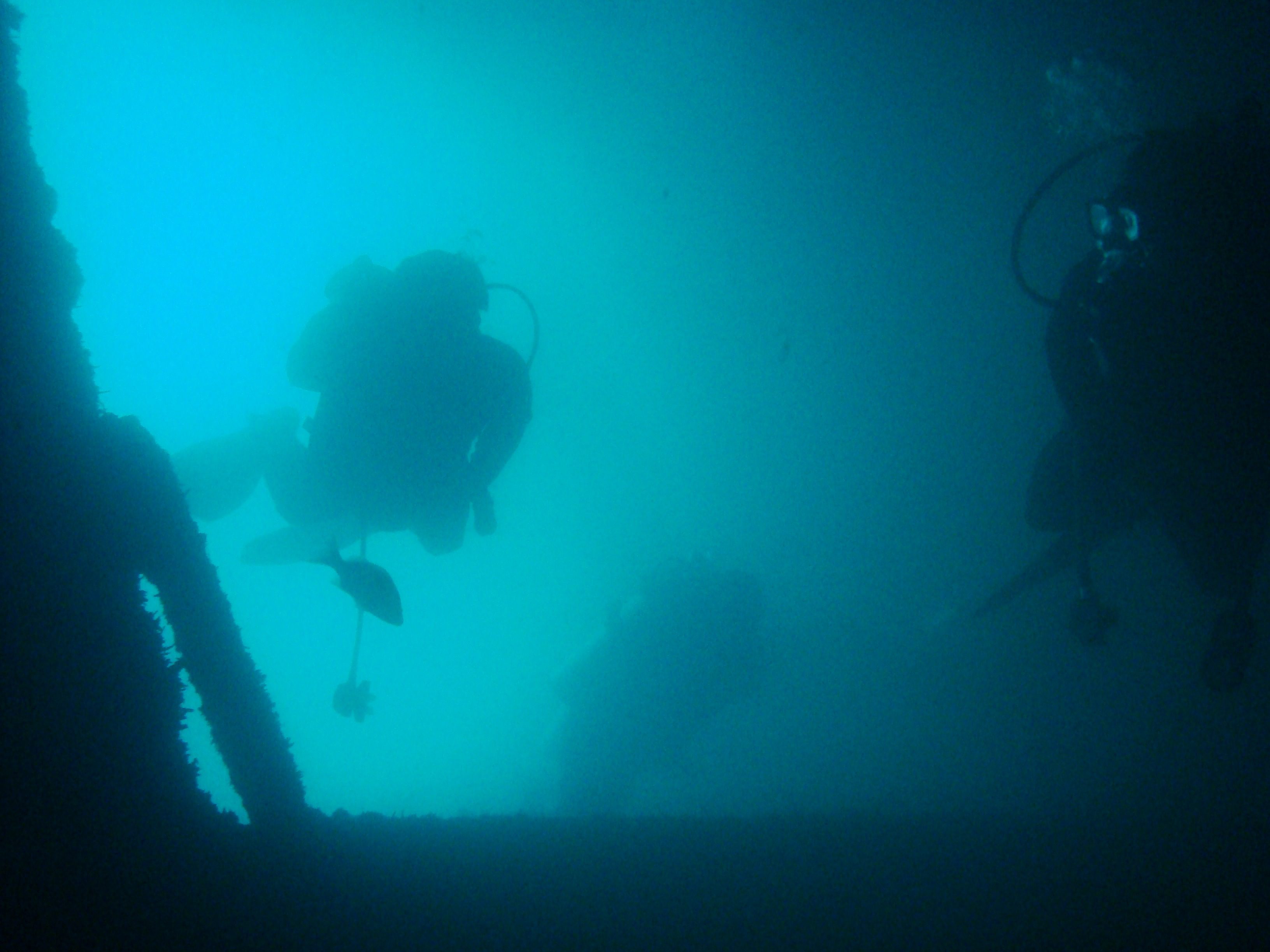
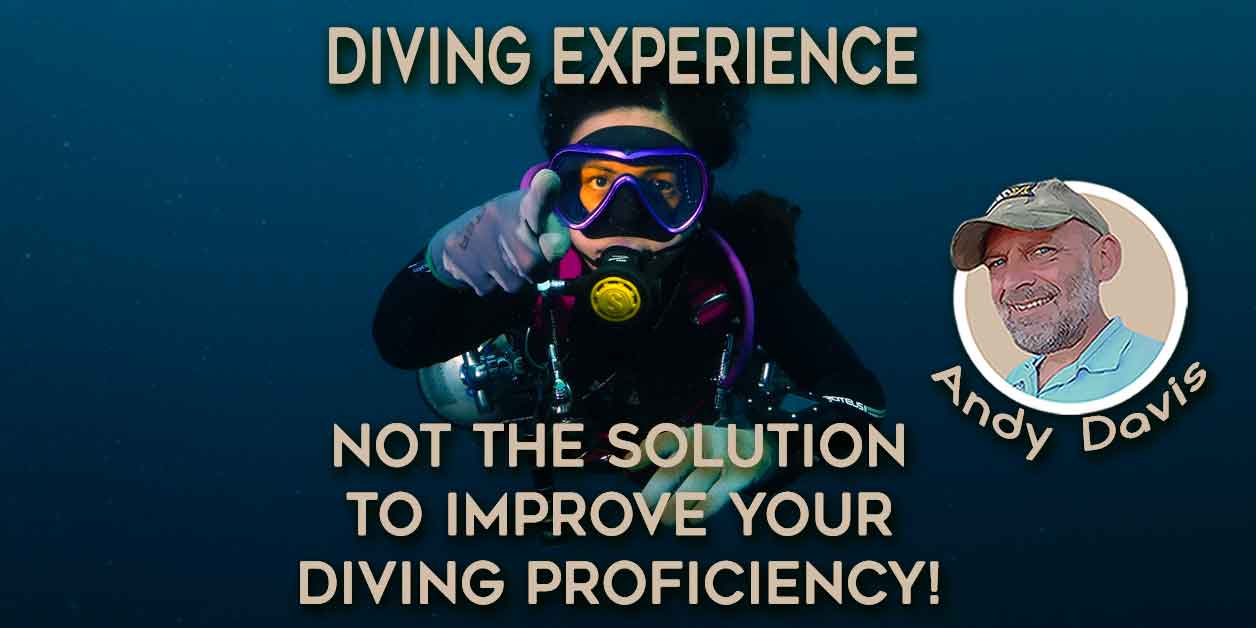

I once had a Buddy Pair (I was the Third) ascend off a wreck early to qualify for a Free dive as they were part of a “Club”. Could have told me.
Other points are monitoring the Minutes to Deco(NDL) and ascending, agreed Gas checks, 120, 100, 70 BAR, and last depth for DECO (6m) if a possibility and also GF settings. Thanks for a great read, cheers Richard.